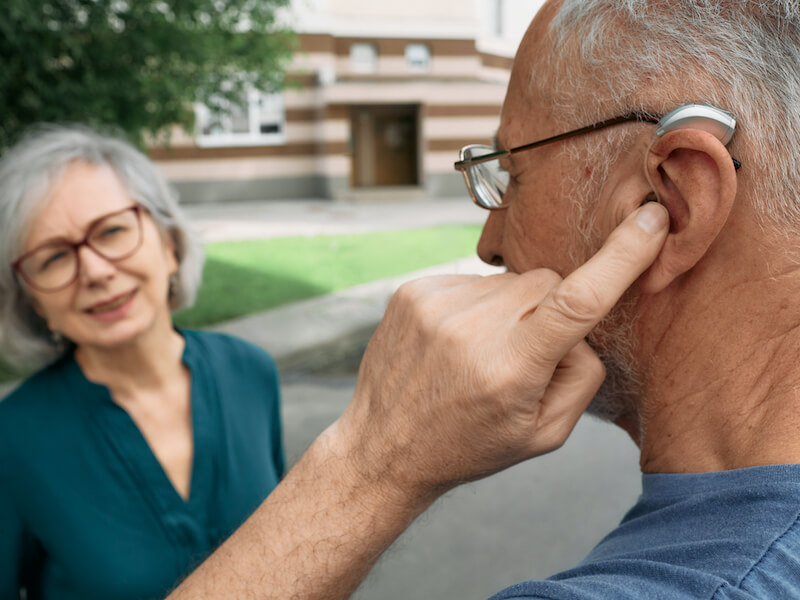
Have you ever been watching your favorite Netflix movie when your internet abruptly cuts out? You sit there and watch that spinning circle instead of finding out who won that cooking competition. And so you just wait. Maybe it’s your modem, could be your router, possibly it’s the internet provider, or maybe it’ll just fix itself. It sort of stinks.
When technology breaks down, it can be very aggravating. The same is definitely true of your hearing aids. Most of the time, your hearing aids will give you the means to stay connected to loved ones, have conversations with co-workers, and keep up with your neighbors.
But when they quit working, your hearing loss symptoms can suddenly become a lot more frustrating. You’ve been let down by the technology you count on. How do hearing aids just quit working? So how do you deal with that? Here are the three prevalent ways your hearing aids can malfunction and how to troubleshoot and identify them.
Hearing aids can often have three common issues
Even though hearing aids are complex technology, people may experience three common problems with them. Let’s take a look at possible causes of these problems and potential fixes.
Feedback and whistling
So, maybe you’re trying to have a conversation with your family or watch your favorite television show and you start to notice a dreadful whistling sound. Or maybe you notice a bit of feedback. And so you think, “Why am I hearing whistling in my hearing aids? This is odd”.
Whistling and feedback can be caused by these possible issues:
- You might not have your hearing aids correctly positioned in your ears. Try to take them out and re-seat them. You can also try reducing the volume (if this works, you might find some short-term relief, but it also likely means that the fit isn’t quite right and you should speak with us about it).
- The tubing that connects the hearing aid with the earmold, on behind-the-ear models, can occasionally become compromised. Take a close look to identify whether the tube might have detached or may be compromised in some way.
- Earwax accumulation in your ear canal can undermine how your hearing aid functions. You’ll find this comes up fairly regularly. That includes making your hearing aid whistle or feedback. If possible, you can attempt to clean some earwax out of your ear or talk to us about the best method to do that (do not use a cotton swab).
Depending on the underlying cause of the feedback, we can help you deal with these problems if you can’t fix them on your own.
Hearing aids not generating sound
Your hearing aids should make, well, sound. That’s what they’re created to do! Something has certainly gone wrong if you can’t hear any sound coming from your hearing aid. So what could be the cause when hearing aids work but no sound comes through? Well, there are a couple of things:
- Earwax buildup: Here we go again with the earwax! Take a close look to see if you come across any earwax on the speakers or microphone. You want to make certain the device is nice and clean.
- Power: Look, we’ve all disregarded turning the hearing aids on before. Check for this first. This potential issue can then be eliminated..
- Your settings: If you have them, cycle through your custom settings. Your hearing aids may think you’re in a huge room when you’re actually in a little room because the setting isn’t right. The sound you’re hearing might be off as a result.
- Batteries: If you have rechargeable batteries, make certain that they are fully charged. And even rechargeable batteries should be swapped out once in a while.
We are here for you if these steps don’t clear your issues up. We’ll be able to help you find out the next steps, and whether maintenance, repair, or replacement is needed.
When you have your hearing aids in, you feel pain in your ears
Maybe your hearing aids are fine functionally but they hurt when you put them in. And you’re likely wondering why your hearing aids would make your ears hurt. This sort of discomfort isn’t exactly conducive to using your hearing aids over the long term. So, what could be causing it?
- Time: Getting accustomed to your hearing aids will take a little while. Each individual will have a different adjustment period. When you first get your new hearing aids, we can help you get a reasonable concept of the adjustment period you can anticipate. Also, speak with us about any discomfort you may be experiencing.
- Fit: The fit of the device is the most evident problem. Naturally, when the fit is nice and tight, your hearing aids will work best. Which means that there can sometimes be pain involved in a poor fit. Some hearing aid models can be fit to the particular shape of your ears. The better the fit, the fewer issues you’ll have with pain over the long run. We will be able to help you get the best possible fit from your devices.
Take your new hearing aid out for a test ride
Before you commit to a set of hearing aids, it’s a good idea to try them out for a while. Most of the time we will have loaner pairs for you to try out before you make a decision.
In fact, we can help you identify the best type of hearing aid for your needs, adjust the fit to match your ears, and help you take care of any ongoing issues you might have with your devices. We will be your resource for any help you need.
And that’s a lot more than you will get with an over-the-counter hearing aid!

